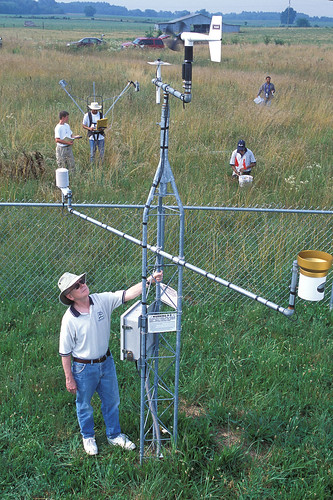
“Probably it is one of the most innovative interagency tools on the planet.” So said Dr. Roger Pulwarty, Director of the National Integrated Drought Information System (of the National Oceanic and Atmospheric Administration, located in Boulder, CO), in describing the development of a coordinated National Soil Moisture Network.
Americans hear the words “drought” and “flood” quite often, but a key factor in determining drought or flood potential, crop yield, water supply, hydrology or climate change impacts is soil moisture. At the Ag Outlook Forum, held recently in suburban Washington, D.C., Dr. Michael Strobel, director of USDA’s National Water and Climate Center (part of the Natural Resources Conservation Service) outlined plans for a nation-wide soil moisture monitoring system and the pilot system that will pave the way.
More complicated than simply testing the soil at certain fixed points at regular intervals and writing down the findings, the system outlined by Dr. Strobel combines models and remote sensing, including satellite data, with an objective of eventually developing a nation-wide soil moisture monitor product.
The regional pilot project is centered in North Texas and Oklahoma and encompasses surrounding states and areas. Objectives include proving the concept of near-real time soil monitoring; demonstrating its usefulness and benefits to a broad range of users, including producers; and finding ways to best leverage the full variety of existing networks and modeling efforts.
Dr. Strobel noted that tools available include not just the Texas A&M North American Soil Moisture Database but the National Oceanic and Atmospheric Administration’s microwave and thermal infrared observations, NASA’s recent launch of a soil moisture active/passive satellite, and the University of Arizona’s Cosmic Ray-Soil Moisture Observing System.
Strobel said the pilot is just beginning, but the hope is that a product can be ready by the end of the summer. Eventually, it could become part of a producer’s “toolbox.” A result from the National Soil Moisture Network will be for farmers and land owners to be able to access data on soil moisture related to their specific location from a home computer and get answers in real time. That not only will help producers improve their practices to be more economical, but will also help improve soil health by providing another tool to support sound farm management.
